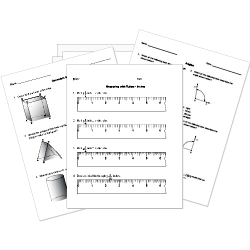Structure of Atom
Structure of Atom
This lesson aligns with NGSS PS1.A
Introduction
The origins of atomic structure and the development of quantum mechanics trace back to the era of Democritus, who initially postulated the concept that matter is fundamentally composed of indivisible particles termed atoms. The term "atomic structure" pertains to the organizational arrangement of an atom, encompassing a central nucleus housing protons (positively charged) and neutrons (electrically neutral). Concurrently, electrons (negatively charged particles) orbit around the nucleus's central region. In this article, we will learn about the structure of an atom, atomic models and subatomic particles.
Atoms
The term "atom" originates from the Greek word meaning "indivisible." The ancient Greeks postulated that matter could be deconstructed into small particles referred to as atoms. Greek philosophers, including Democritus and John Dalton, played integral roles in introducing and developing the concept of the atom.
Atomic Structure
Fundamentally, the atomic structure of matter comprises protons, electrons, and neutrons. The nucleus of the atom is formed by protons and neutrons, and it is encircled by electrons that are associated with the atom. The atomic number of an element is a descriptor that denotes the total count of protons contained within its nucleus.

Uncharged atoms, commonly referred to as neutral atoms, with an equal number of protons and electrons. Nevertheless, atoms possess the capacity to acquire or lose electrons to enhance their stability, leading to the formation of charged entities known as ions.
The atomic structures of various elements are different due to the numbers of protons and electrons.
Atomic Models
Dalton’s Atomic Theory:
The English chemist John Dalton proposed the idea that all matter is composed of indivisible and indestructible particles called atoms. Furthermore, he stated that all atoms of a given element are identical, while atoms of distinct elements vary in size and mass.
According to Dalton's atomic theory, chemical reactions involve the rearrangement of atoms to generate products. As per Dalton's postulates, the atomic structure is constituted by atoms which are responsible for chemical reactions.
Thomson Atomic Model:
In the early 1900s, the English chemist Sir Joseph John Thomson described the atomic structure. Notably, He earned the Nobel Prize for the discovery of “electrons”. His work was rooted in an experiment called the cathode ray experiment.
Thomson characterized the atomic structure as a positively charged sphere containing embedded negatively charged electrons. This concept is commonly known as the "plum pudding model”.According to Thomson's atomic model, atoms were depicted as electrically neutral, meaning that the positive and negative charges were of equal magnitude.
Rutherford Atomic Model:
Ernest Rutherford, a student of J. J. Thomson, made significant modifications to the atomic structure by introducing the discovery of another subatomic particle known as the "nucleus." The foundation of his atomic model rests upon the findings from the Alpha ray scattering experiment. Rutherford introduced his distinct atomic structure, characterized by the following features:
- The nucleus resides at the center of the atom, containing the majority of the charge and mass.
- The atomic structure is spherical in its arrangement.
- Electrons orbit the nucleus in circular paths, resembling the orbital patterns of planets around the sun.
Subatomic Particles
Protons
- Protons, constituting positively charged subatomic particles, having a charge of 1e, equivalent to approximately 1.602 × 10⁻¹⁹ coulombs.
- The mass of a proton is about 1.672 × 10⁻²⁴ grams, making protons more than 1800 times heavier than electrons.
- The total count of protons within an element's atoms always corresponds to the atomic number of the respective element.
Neutrons
- Neutrons exhibit a mass nearly identical to that of protons, approximately 1.674 × 10⁻²⁴ grams.
- Unlike protons, neutrons are electrically neutral particles, carrying no charge.
- Isotopes of an element share the same proton count but differ in the number of neutrons present within their nuclei.
Electrons
- Electrons, characterized by a charge of -1e (approximately -1.602 × 10⁻¹⁹ coulombs), possess a considerably smaller mass of about 9.1 × 10⁻³¹ kilograms.
- Due to their relatively negligible mass, electrons are often disregarded when calculating the overall mass of an atom.
Summary
- The term "atom" originates from the Greek word meaning "indivisible”.
- The nucleus of the atom is formed by protons and neutrons, and it is encircled by electrons that are associated with the atom.
- Protons are positively charged subatomic particles, having a charge of 1e, equivalent to approximately 1.602 × 10⁻¹⁹ coulombs.
- Unlike protons, neutrons are electrically neutral particles, carrying no charge.
- Electrons, characterized by a charge of -1e (approximately -1.602 × 10⁻¹⁹ coulombs), possess a considerably smaller mass of about 9.1 × 10⁻³¹ kilograms.
Related Worksheets:













